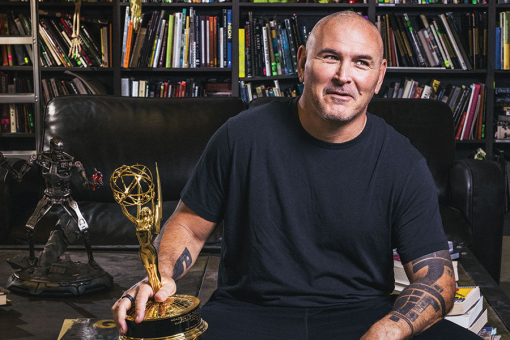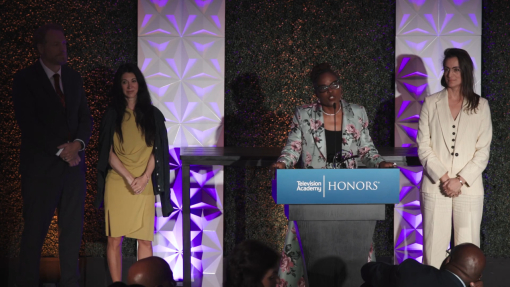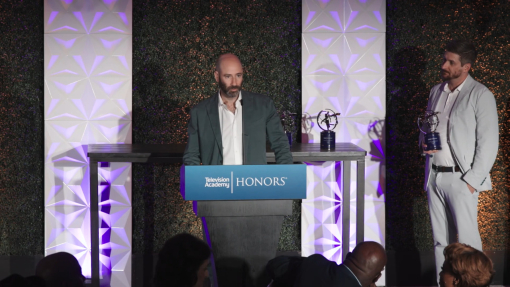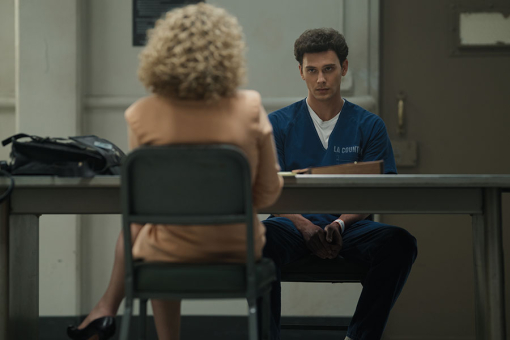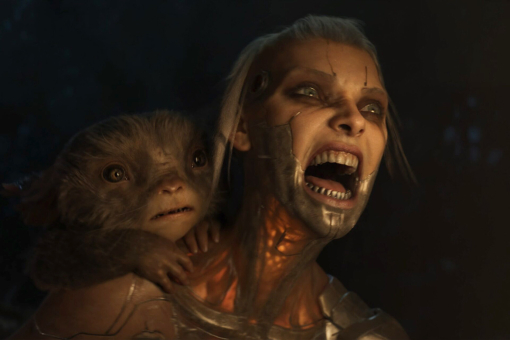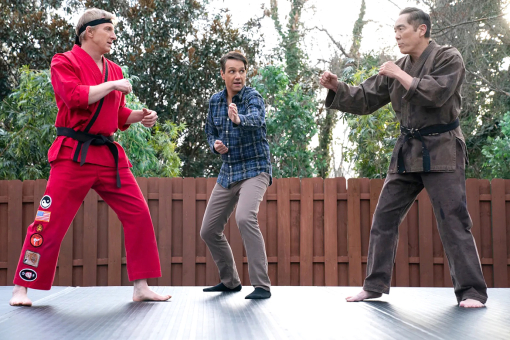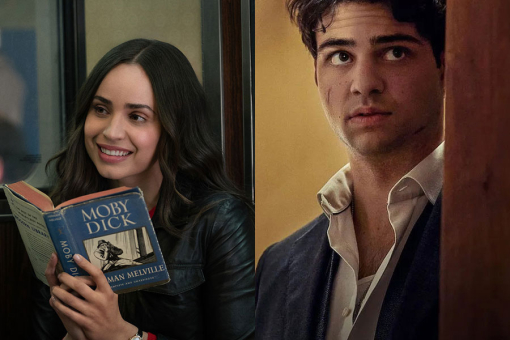When Mara Brock Akil (Girlfriends, Being Mary Jane) initially approached YA pioneer Judy Blume about reimagining Blume’s 1975 novel Forever as a TV series, Blume initially had some reluctance.
After all, the main characters in Forever –– one of the most banned or challenged books of all time for its frank discussion of teen sexuality –– explore romance, desire and body parts in a bygone era that today’s teens would find comically innocent. Yet Akil swayed her, turning a defining book from her own adolescence into an eight-episode rom-dram recontextualized through the prism of her own identity.
Set in the mostly Black enclaves of Los Angeles circa 2018, Forever depicts high school juniors Keisha (Lovie Simone) and Justin (Michael Cooper Jr.) navigating lust, love, hookup culture, family and their futures. Directed by the likes of Regina King, Anthony Hemingway and Akil herself, Forever gives the universal themes from Blume’s half-century-old story an entirely new context –– earning praise from critics and a second season renewal just a week after its May debut. The Television Academy caught up with Akil to talk about understanding modern-day teens, showing beauty not often seen, and how she got Blume — an EP on the series — to buy into her vision for Forever.
 Mara Brock Akil on the set / Photo by: Netflix
Mara Brock Akil on the set / Photo by: Netflix
Television Academy: Judy Blume initially had some skepticism about how a modern adaptation of Forever would work, but you two spoke, and she got on board. What did you say that altered her thinking?
Mara Brock Akil: I think it's a rightful [concern] when you think about first loves and teenagers, or young adults, first having sex in 2025 versus 1975. They know more than I do!
What we got to talk about is that I’d be able to show the progression of sexuality in culture. If you notice in my reimagining, sex positivity and choice and consent are present. Kids know that. They know the rules of engagement. Also, young women are saying: “We are interested in exploring our sexuality and approaching it without having to be in love. Whereas, in the book, it was, “I'm in love, and now [sex] must be a natural next step.” So we started there, but what’s different in this generation is that, in terms of connection and intimacy, we're further away from that than when she wrote the book.
Also, I think the book posits that Catherine — back in 1975, with the introduction of the birth control pill — she's the most vulnerable of that time. I suggest that Black boys are the most vulnerable of this time, because Black boys, you know, they're real cute in fourth grade, and then suddenly, as they get bigger and taller, they become the biggest menace to society. And so the thought of dating your daughter, all of that historical stuff that comes with the burden of being Black in America, it rests on Black boys. So, as Black parents, you have to have very uncomfortable conversations with your children. You have to sort of take their innocence away — to protect them in this era and in society. She heard that, and I think storyteller to storyteller, she was able to see that I saw something like [she did] when she wrote the book that was worthy of talking about.
And in this reimagining, which is the word I prefer that you use, I got to center the complicated issue of technology –– the phone in the middle of their relationship — to create wonderful twists and turns in miscommunication.
To that point, I found that the voices of the young people in Forever are so specific and real; they sound exactly how kids talk these days. How did you and your writers nail that dialogue?
I'd like to give myself a little credit; I've just been paying attention. My oldest son is my muse. He is 21, and my youngest is 16. So you're paying attention to him, his friends. And you're around other kids — that’s my portal to the generation. That's my first job as a writer — I need to listen — so I took [a first draft] to [my youngest son]. He gave me a couple of pointers, but, for the most part, he was impressed. Then, the translation of that — back into the writers' room and building the writers out, and letting the writers add even more language to it — was really important.
How did you approach the visual style and look of the show and the world of its characters?
There are a lot of beautiful spaces and places that Black people exist in that don't make it to the screen. I wanted to show people the beauty of below the 10 [Freeway in Los Angeles] that often is depicted as not beautiful, or less than, or there's always some sort of violence. That was the intentionality of showing the beauty of our environment. Being able to show that, when you have wealth in this city, what that could look like. So you find people who care about that, and who understand the complex beauty of Los Angeles in general — like where Keisha lives. It's not Altadena, but it's another version of Altadena in terms of how these historical neighborhoods have literally nurtured generations of Black people and have seen it through the lens of that beauty.
My first key collaborators are going to be my production designer, Suzuki [Ingerslev], who is from Los Angeles. Also, the locations that we pick [are important]. [Supervising location manager] Alison [A. Taylor] is also from Los Angeles, and she did beautiful work understanding that these teenagers need to have space in the world. And then the last and very important collaborator is Regina King. Regina and I grew up in the same neighborhood, but I went to Windsor Hill Elementary and she went to 54th Street Elementary. Our love for our city and our neighborhood is on that screen.
 Regina King on the set of Forever / Photo by: Netflix
Regina King on the set of Forever / Photo by: Netflix
Regina directed the first episode, which sets the tone for the series. What are some things she brought to the process that perhaps added elements that maybe you didn’t consider or helped amplify your vision?
Regina is so important to the collaboration. It was that mutual love of Los Angeles that we talked about. Also, Regina is iconic through the roles that she has played for us — and because of her authenticity, the humanity through her characters. And I was like, “Sis, can you help me with some new young actors and help anchor us in telling this epic, intimate love story within a love letter to Los Angeles?” She just checked all of the boxes, and helped set the tone and the look of the show. [She] is one of the key collaborators in setting up the series for success.
As you know, this book has been the frequent target of censorship. Why do you think that is? Were there parts of the story that you wanted to dial up or die down?
I think that, for those who don't want to tell their children the truth, the book will always be controversial. And the show will be controversial, too.
But those who want to maybe use this opportunity to create a conversation with their children, the truth always helps — and art does that. There are many conversations of truth in the piece. I think, for families who want to maybe use it as a way to broach what might be still awkward for some parents, they can say: “Hey, what do you think about that?” And then they can be able to talk about not just sex, but our family's morals and values, and let children enter in the conversation. They are starting to have emotional feelings toward someone. They are curious about their bodies and sex, to have or not have sex.
Just as we fought for the seat belt, we need to make sure our children are safe as they're navigating these huge choices — your emotional self, your physical self and your future self.
Forever is now streaming on Netflix.
Created by Mara Brock Akil, Forever is executive produced by Akil, Judy Blume, Susie Fitzgerald, Erika Harrison, Sara White, Regina King, Shana C. Waterman and Anthony Hemingway.


